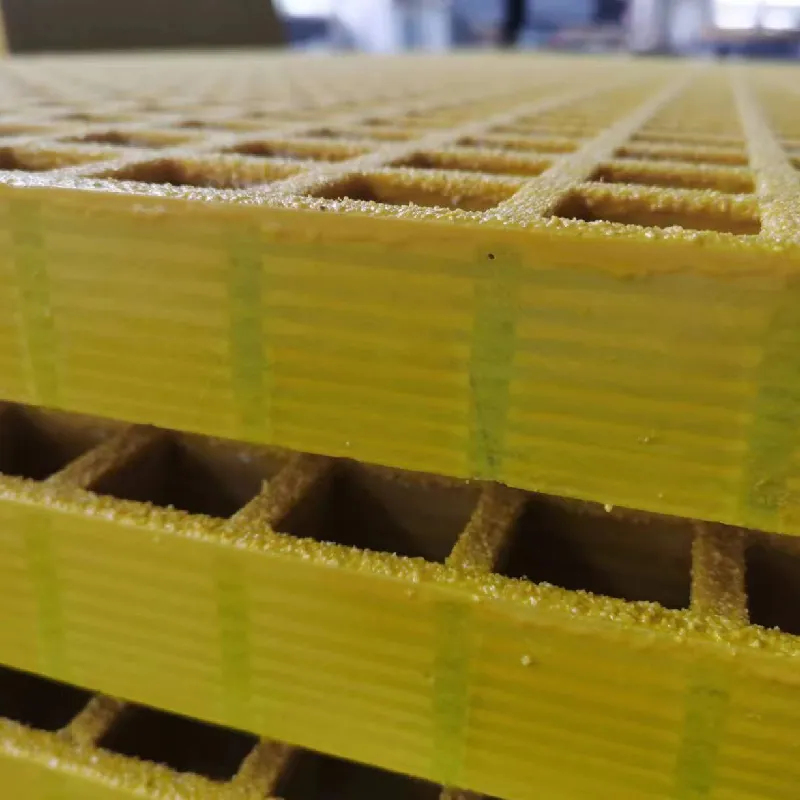loading...
- No. 9, Xingyuan South Street, Dongwaihuan Road, Zaoqiang County, Hengshui, Hebei, China
- admin@zjcomposites.com
- +86 15097380338
- Welcome to visit our website!
frp reinforcement bars
Understanding FRP Reinforcement Bars A Modern Solution for Structural Integrity
In recent years, Fiber Reinforced Polymer (FRP) reinforcement bars have gained significant attention in the construction industry due to their advantageous properties and superior performance compared to traditional steel reinforcement. As the demand for durable, efficient, and environmentally friendly construction materials rises, FRP bars emerge as an innovative solution that addresses many of the challenges faced by engineers and constructors.
What are FRP Reinforcement Bars?
FRP reinforcement bars are composite materials that consist of a polymer matrix reinforced with fibers, typically glass, carbon, or aramid. These materials are designed to provide tensile strength and resistance to environmental factors while being considerably lighter than steel. An essential aspect of FRP bars is their resistance to corrosion, which significantly improves the lifespan of structures, particularly in harsh environments such as coastal areas or regions with high humidity.
Advantages of FRP Reinforcement Bars
1. Corrosion Resistance One of the most significant benefits of FRP bars is their resistance to corrosion. Unlike steel, which can corrode when exposed to moisture and chemicals, FRP bars maintain their integrity over time, thus reducing maintenance costs and enhancing the durability of structures.
2. Light Weight FRP bars are much lighter than steel, which simplifies handling and installation. This property allows for easier transportation and can lead to reduced labor costs during construction. The lightweight nature of FRP also enables designers to develop innovative structural solutions that were previously unfeasible.
3. High Strength-to-Weight Ratio Despite their lower weight, FRP bars offer an exceptional strength-to-weight ratio. This feature allows engineers to design more efficient structures while minimizing the amount of material used. As a result, FRP bars can significantly reduce the overall weight of a construction project.
4. Electrical Insulation FRP materials are non-conductive, making them an ideal choice for applications requiring electrical insulation. This characteristic is particularly useful in infrastructure projects where electrical currents may pose a risk or in sensitive environments like power plants.
frp reinforcement bars

5. Flexibility in Design The production of FRP bars can be tailored to meet specific project requirements, allowing for various forms, sizes, and strengths. This flexibility in design enables engineers to develop innovative solutions to complex structural challenges.
Applications of FRP Reinforcement Bars
FRP reinforcement bars are widely used in various applications, including
- Bridges Due to their high resistance to corrosion, FRP bars are increasingly used in bridge construction and retrofitting projects to extend the lifespan of aging infrastructure. - Marine Structures Their ability to withstand harsh marine environments makes FRP bars an excellent choice for docks, seawalls, and other coastal structures. - Parking Garages The use of FRP reinforcement in parking garages reduces the risk of corrosion from de-icing salts and moisture, leading to lower maintenance costs over time. - Highway Structures FRP bars are also employed in highway applications where durability and reduced weight can lead to significant cost savings during construction and maintenance.
Challenges and Considerations
While the advantages of FRP reinforcement bars are compelling, several challenges remain. Engineers must consider the higher initial cost of FRP compared to traditional materials such as steel. Furthermore, the bond between FRP and concrete can be less effective than that of steel, necessitating careful engineering and design considerations.
Additionally, the long-term performance of FRP bars under various environmental conditions is still being studied, as the material behavior over decades remains a critical area of research.
Conclusion
FRP reinforcement bars represent a significant advancement in construction materials, offering a range of benefits that cater to modern structural needs. Their unique properties make them a viable alternative to traditional steel reinforcement, especially in scenarios where durability and resistance to environmental factors are paramount. As research advances and technology evolves, FRP bars are poised to play an increasingly important role in the future of construction, contributing to safer, more resilient, and sustainable infrastructure development.
-
Premium FRP Handrail for All ApplicationsNewsAug.29,2025
-
Low Maintenance FRP Mini Mesh Grating ProductsNewsAug.29,2025
-
Innovative FRP Square Tubes for Modern Industrial SolutionsNewsAug.29,2025
-
FRP Water Storage Tanks Wholesale Solutions for Bulk BuyersNewsAug.29,2025
-
FRP Molded Grating Solutions for Diverse Industrial ApplicationsNewsAug.29,2025
-
Construction Advancements Through FRP Pultruded ProfilesNewsAug.29,2025
-
Why Choose FRP Railings, Guardrails, and Handrail Systems?NewsAug.29,2025
